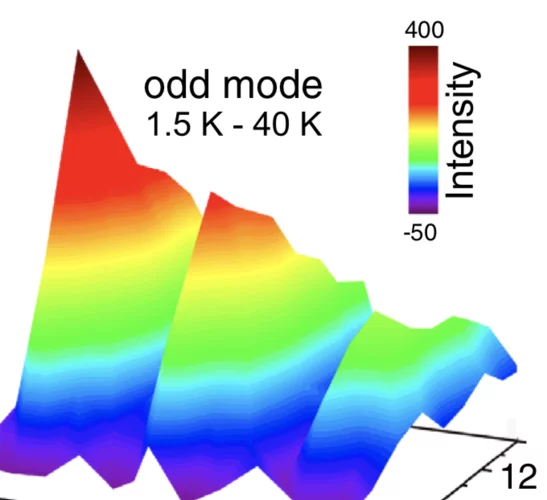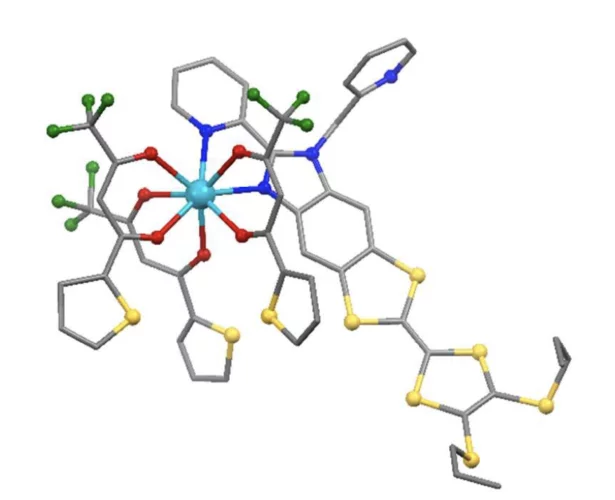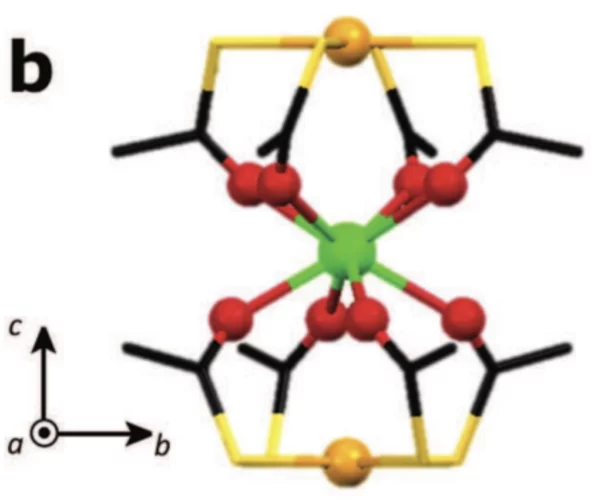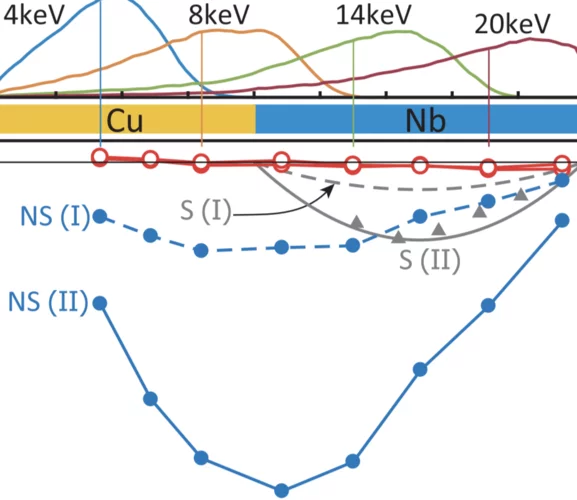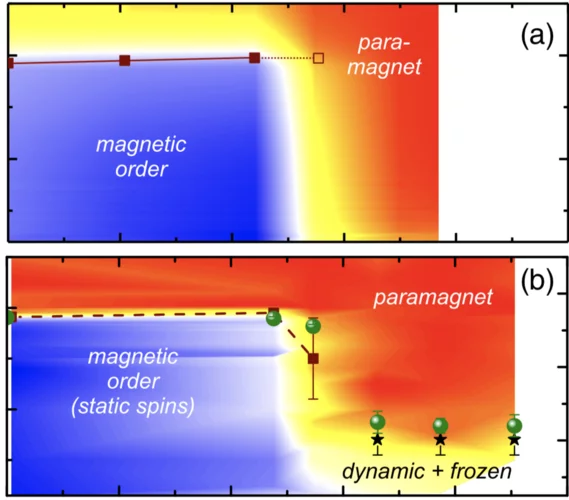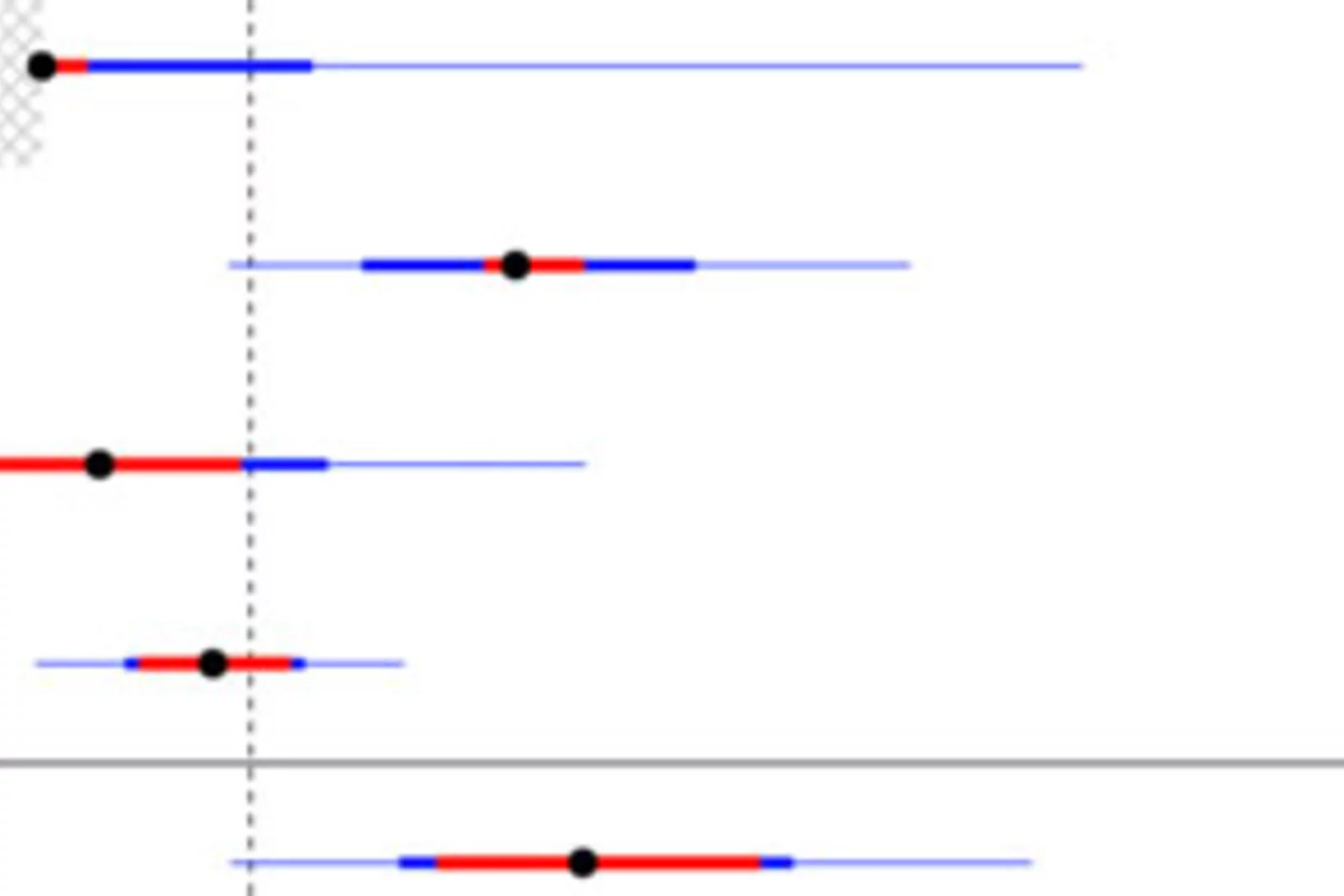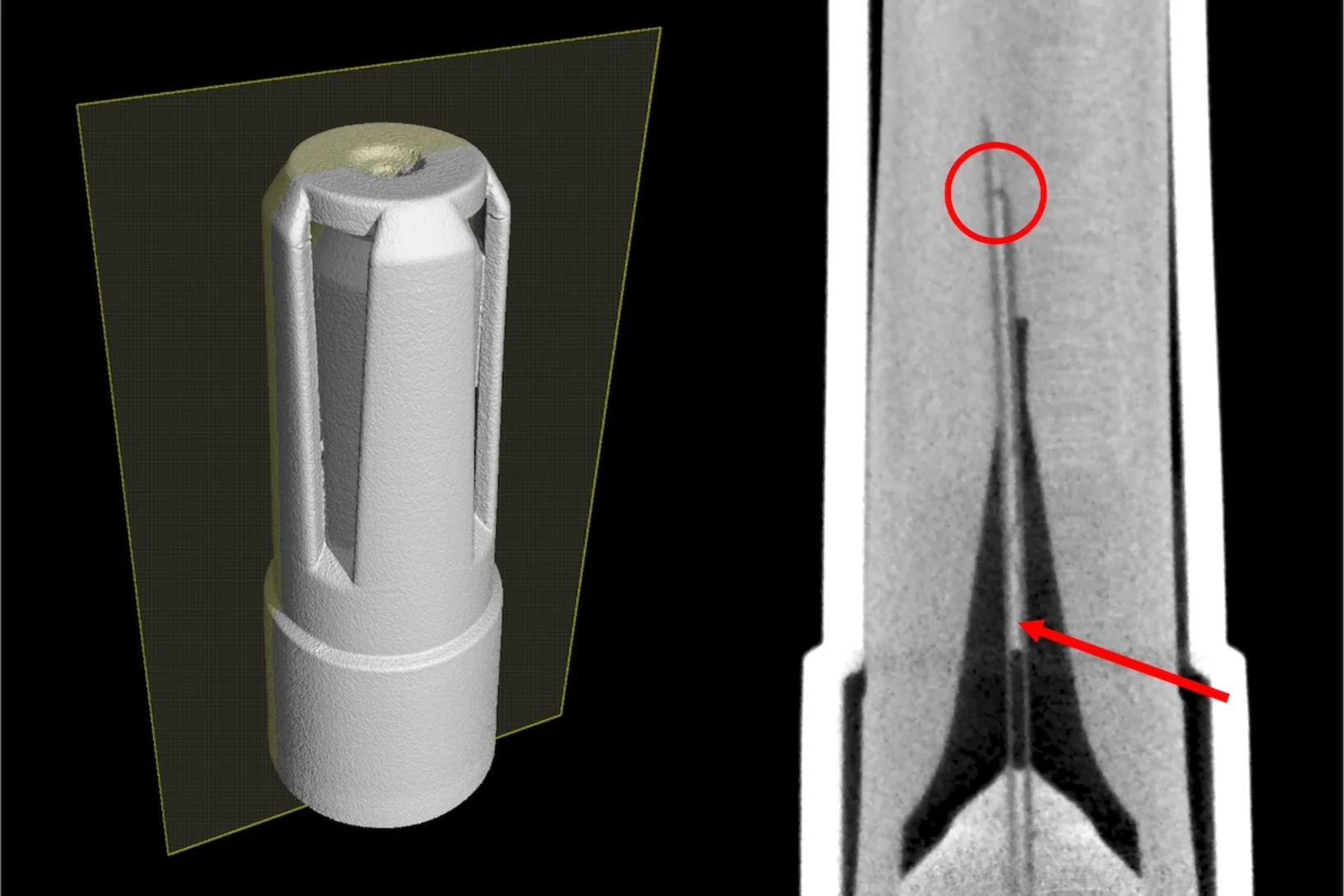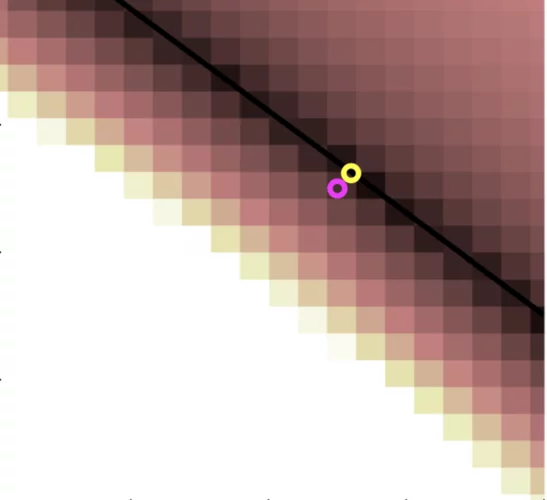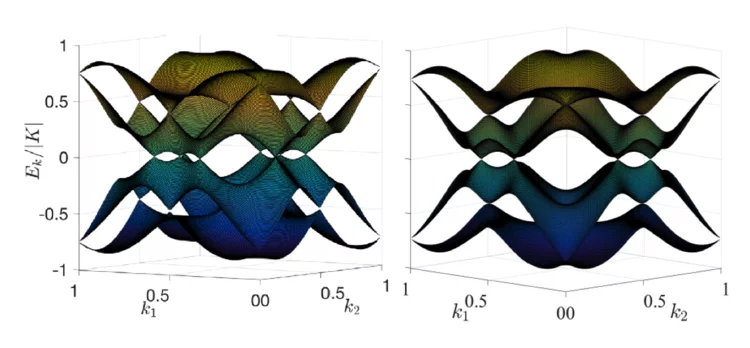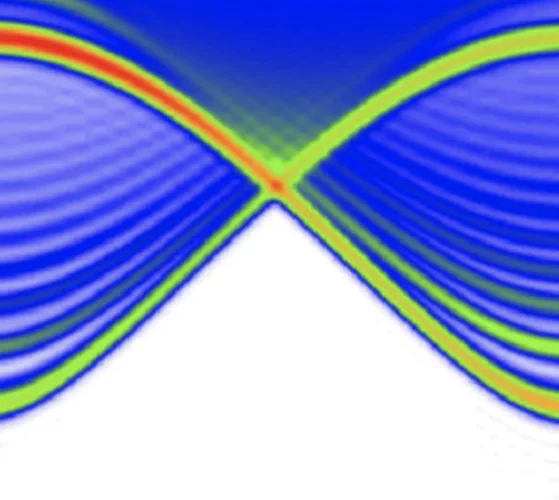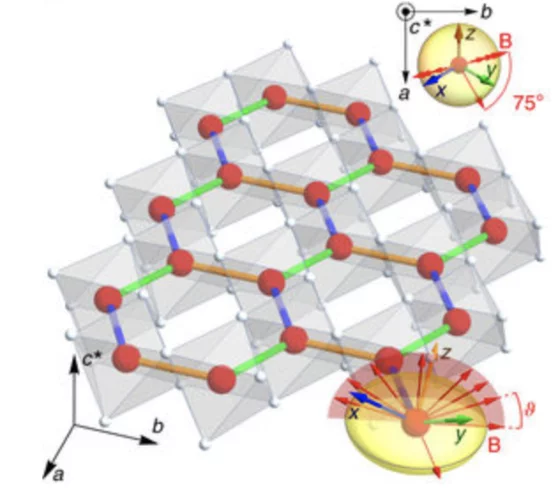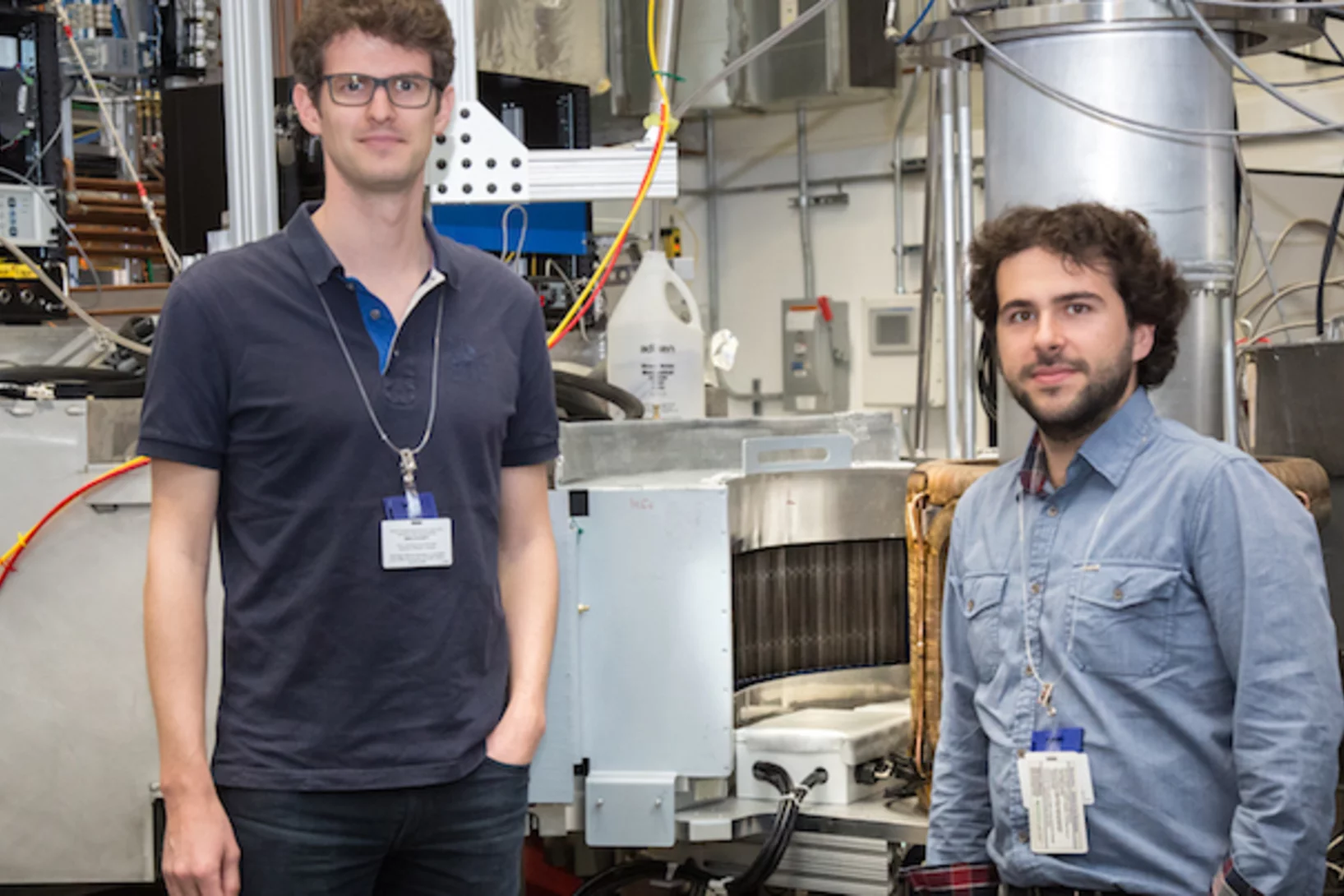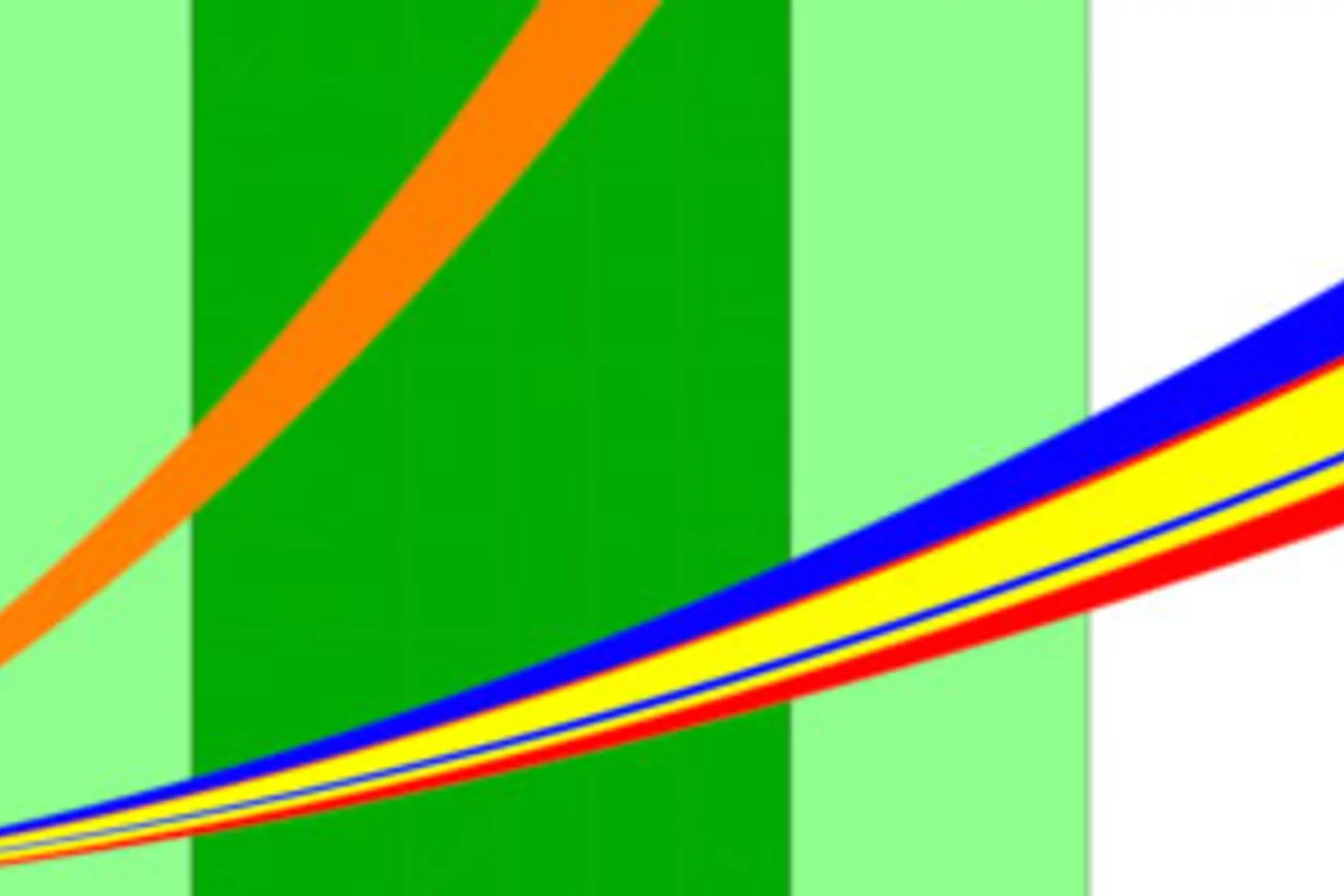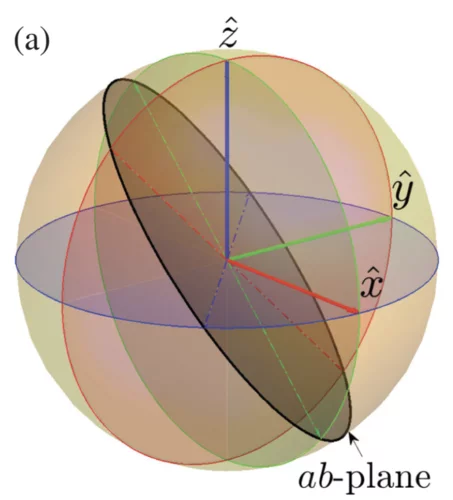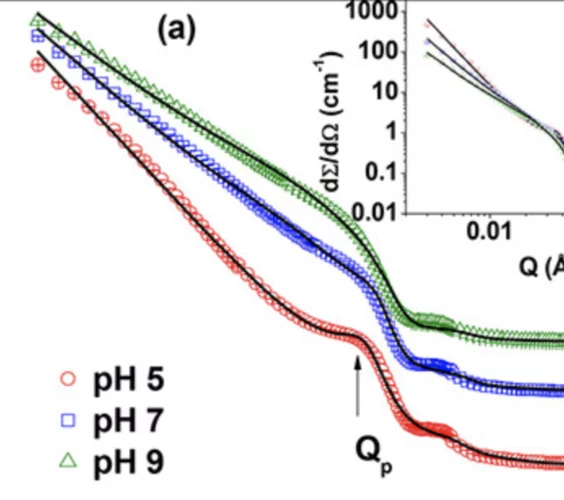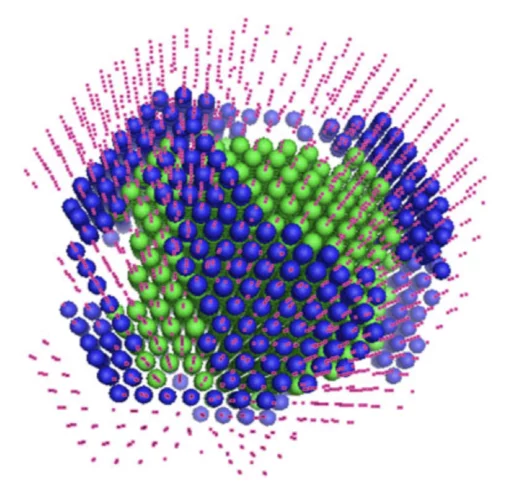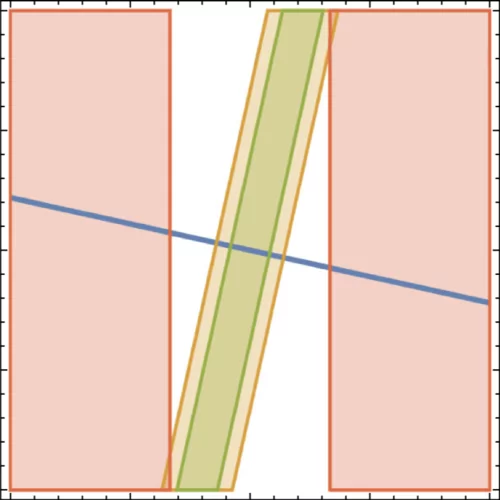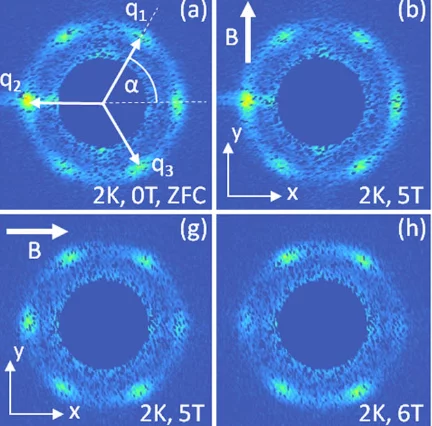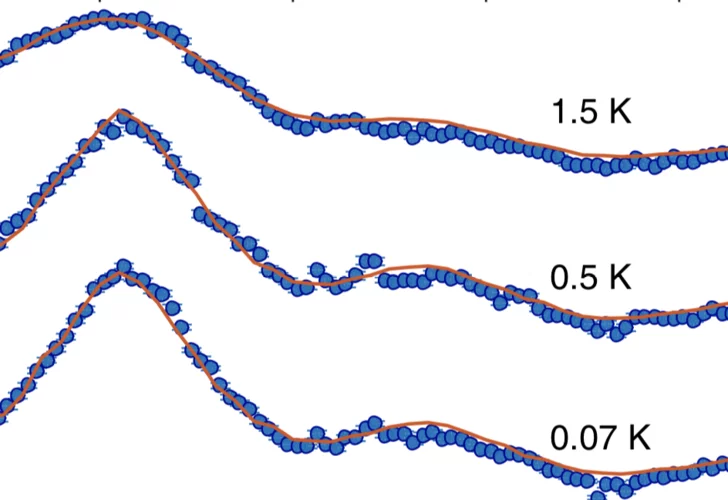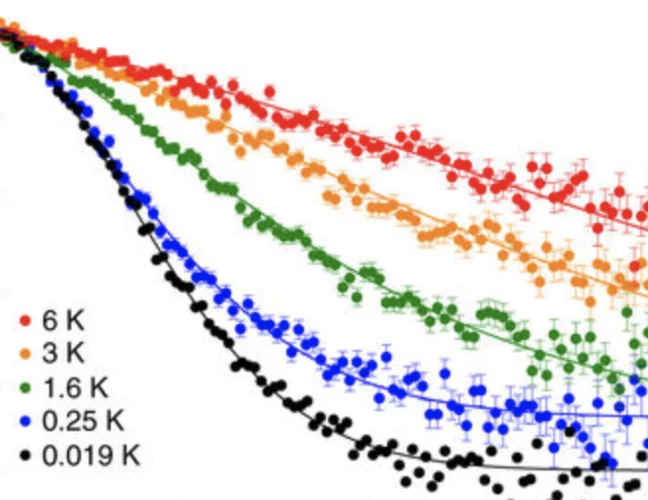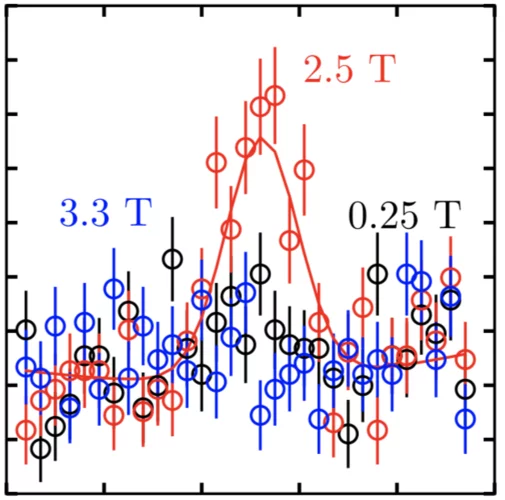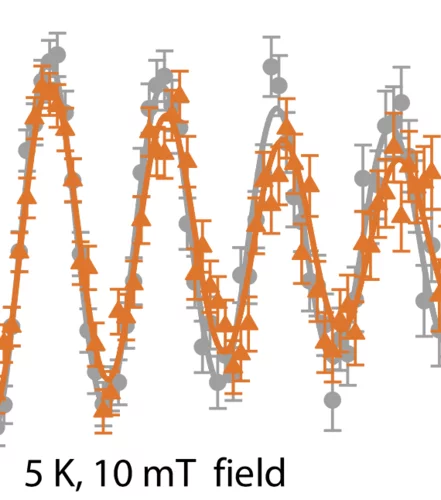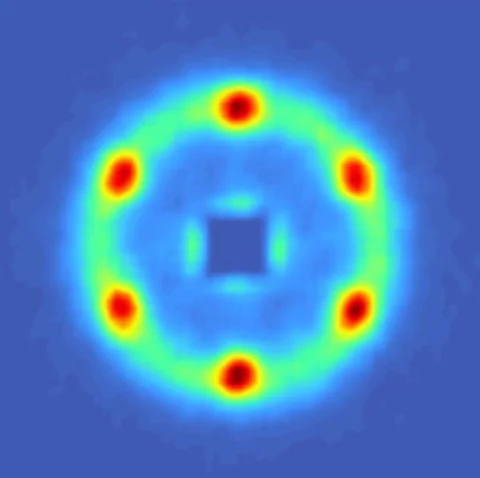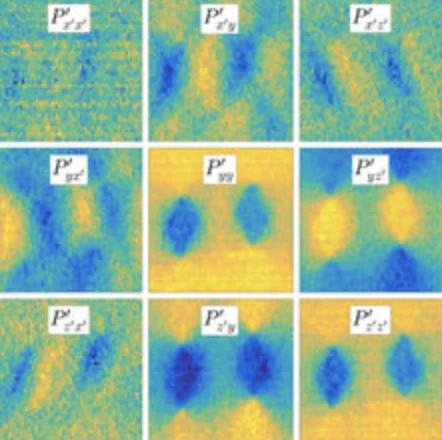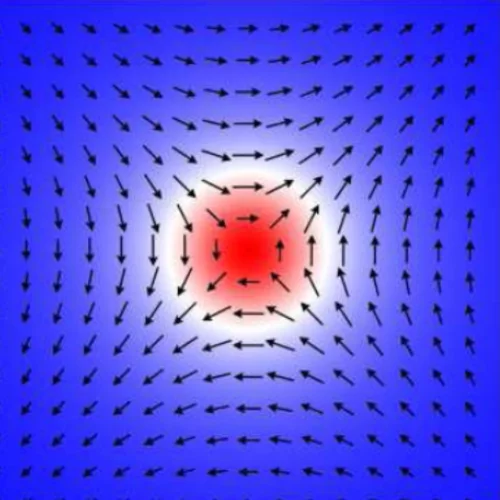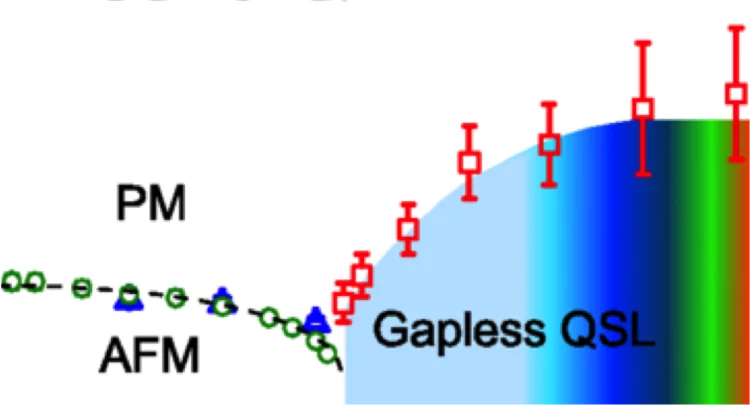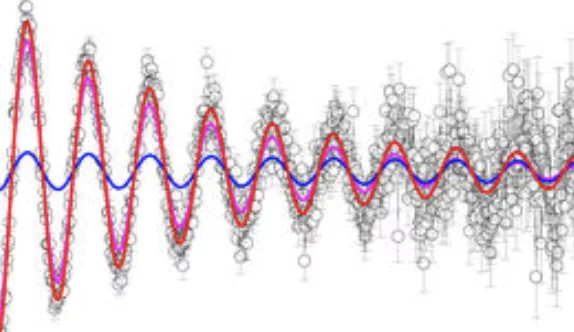Direct electric field control of the skyrmion phase in a magnetoelectric insulator
Magnetic skyrmions are topologically protected spin-whirls currently considered as promising for use in ultra-dense memory devices. Towards achieving this goal, exploration of the skyrmion phase response and under external stimuli is urgently required.
Odd and Even Modes of Neutron Spin Resonance in the Bilayer Iron-Based Superconductor CaKFe4As4
We report an inelastic neutron scattering study on the spin resonance in the bilayer iron-based superconductor CaKFe4As4. In contrast to its quasi-two-dimensional electron structure, three strongly L-dependent modes of spin resonance are found below Tc = 35 K.
Isotope effect on the spin dynamics of single-molecule magnets probed by muon spin spectroscopy
Muon spin relaxation (μSR) experiments on a single molecule magnet enriched in different Dy isotopes detect unambiguously a slowing down of the zero field spin dynamics for the non-magnetic isotope. This occurs in the low temperature regime dominated by quantum tunnelling, in agreement with previous ac susceptibility investigations. In contrast to the latter, however, μSR is sensitive to all fluctuation modes affecting the lifetime of the spin levels.
Magnetic Anisotropy Switch: Easy Axis to Easy Plane Conversion and Vice Versa
The rational design of the magnetic anisotropy of molecular materials constitutes a goal of primary importance in molecular magnetism. Indeed, the applications of molecular nanomagnets, such as single-molecule magnets and molecular magnetic refrigerants, depend on the full control over this property.
Observation of Anomalous Meissner Screening in Cu/Nb and Cu/Nb/Co Thin Films
We have observed the spatial distribution of magnetic flux in Nb, Cu/Nb, and Cu/Nb/Co thin films using muon-spin rotation. In an isolated 50-nm-thick Nb film, we find a weak flux expulsion (Meissner effect) which becomes significantly enhanced when adding an adjacent 40 nm layer of Cu. The added Cu layer exhibits a Meissner effect (due to induced superconducting pairs) and is at least as effective as the Nb to expel flux.
Breakdown of Magnetic Order in the Pressurized Kitaev Iridate β-Li2IrO3
Temperature-pressure phase diagram of the Kitaev hyperhoneycomb iridate β-Li2IrO3 is explored using magnetization, thermal expansion, magnetostriction, and muon spin rotation measurements, as well as single-crystal x-ray diffraction under pressure and ab initio calculations.
Observation of ttH Production
The observation of Higgs boson production in association with a top quark-antiquark pair is reported, based on a combined analysis of proton-proton collision data at center-of-mass energies of √s = 7,8, and 13 TeV, corresponding to integrated luminosities of up to 5.1, 19.7, and 35.9 fb-1, respectively. The data were collected with the CMS detector at the CERN LHC.
Clogging in staked-in needle pre-filled syringes (SIN-PFS): Influence of water vapor transmission through the needle shield
Staked-in needle pre-fillable syringes (SIN-PFS) are a convenient delivery system widely established in the growing pharmaceutical market. Under specific storage conditions, the needle of PFS containing high concentration drug product (DP) solution is prone to clogging, which prevents administration of the liquid.
Special temperatures in frustrated ferromagnets
The description and detection of unconventional magnetic states, such as spin liquids, is a recurring topic in condensed matter physics. While much of the efforts have traditionally been directed at geometrically frustrated antiferromagnets, recent studies reveal that systems featuring competing antiferromagnetic and ferromagnetic interactions are also promising candidate materials.
A theory for the gapless field-induced quantum spin-liquid phase of α−RuCl3
The material α−RuCl3 continues to garner attention as the current poster child for realising the Kitaev model. New work places recent experimental observations on a solid theoretical footing, and concludes that the physics of α−RuCl3 is not dominated by Kitaev interactions.
Topological quantum phase transition in the Ising-like antiferromagnetic spin chain BaCo2V2O8
Since the seminal ideas of Berezinskii, Kosterlitz and Thouless, topological excitations have been at the heart of our understanding of a whole novel class of phase transitions. In most cases, those transitions are controlled by a single type of topological objects. There are, however, some situations, still poorly understood, where two dual topological excitations fight to control the phase diagram and the transition.
Observation of two types of fractional excitation in the Kitaev honeycomb magnet
Quantum spin liquid is a disordered but highly entangled magnetic state with fractional spin excitations. The ground state of an exactly solved Kitaev honeycomb model is perhaps its clearest example. Under a magnetic field, a spin flip in this model fractionalizes into two types of anyon, a quasiparticle with more complex exchange statistics than standard fermions or bosons: a pair of gauge fluxes and a Majorana fermion.
Spin ice goes quantum
Numerous intriguing behaviours have been observed already in magnetic materials known as spin ices. But now for the first time direct manifestations of quantum mechanical effects have been seen in such a system.
Searching for New Physics with b → sτ+τ-
In recent years, intriguing hints for the violation of lepton flavor universality (LFU) have been accumulated in semileptonic B decays, both in the charged-current transitions b → cl-ν-l (i.e., RD, RD∗, and RJ/Ψ and the neutral-current transitions b → sl+l- (i.e., RK and RK∗.
Dirac and Chiral Quantum Spin Liquids on the Honeycomb Lattice in a Magnetic Field
Motivated by recent experimental observations in α-RuCl3, we study the Κ-Γ model on the honeycomb lattice in an external magnetic field. By a slave-particle representation and variational Monte Carlo calculations, we reproduce the phase transition from zigzag magnetic order to a field-induced disordered phase. The nature of this state depends crucially on the field orientation.
Experimental signatures of emergent quantum electrodynamics in Pr2Hf2O7
In a quantum spin liquid, the magnetic moments of the constituent electron spins evade classical long-range order to form an exotic state that is quantum entangled and coherent over macroscopic length scales. Such phases offer promising perspectives for device applications in quantum information technologies, and their study can reveal new physics in quantum matter.
Structure and Interaction of Nanoparticle–Protein Complexes
The integration of nanoparticles with proteins is of high scientific interest due to the amazing potential displayed by their complexes, combining the nanoscale properties of nanoparticles with the specific architectures and functions of the protein molecules.
Quantitative 3D determination of self-assembled structures on nanoparticles using small angle neutron scattering
The ligand shell (LS) determines a number of nanoparticles’ properties. Nanoparticles’ cores can be accurately characterized; yet the structure of the LS, when composed of mixture of molecules, can be described only qualitatively (e.g., patchy, Janus, and random).
No-Go Theorem for Nonstandard Explanations of the τ → KSπντ CP Asymmetry
The CP asymmetry in τ → KSπντ, as measured by the BABAR collaboration, differs from the standard model prediction by 2.8 σ. Most nonstandard interactions do not allow for the required strong phase needed to produce a nonvanishing CP asymmetry, leaving only new tensor interactions as a possible mechanism.
Magnetic Field Control of Cycloidal Domains and Electric Polarization in Multiferroic BiFeO3
The magnetic field induced rearrangement of the cycloidal spin structure in ferroelectric monodomain single crystals of the room-temperature multiferroic BiFeO3 is studied using small-angle neutron scattering. The cycloid propagation vectors are observed to rotate when magnetic fields applied perpendicular to the rhombohedral (polar) axis exceed a pinning threshold value of ∼5T.
Dipolar Spin Ice States with a Fast Monopole Hopping Rate in CdEr2X4 (X = Se, S)
Excitations in a spin ice behave as magnetic monopoles, and their population and mobility control the dynamics of a spin ice at low temperature. CdEr2Se4 is reported to have the Pauling entropy characteristic of a spin ice, but its dynamics are three orders of magnitude faster than the canonical spin ice Dy2Ti2O7.
Spin-liquid-like state in a spin-1/2 square-lattice antiferromagnet perovskite induced by d10 – d0 cation mixing
A quantum spin liquid state has long been predicted to arise in spin-1/2 Heisenberg square-lattice antiferromagnets at the boundary region between Néel (nearest-neighbor interaction dominates) and columnar (next-nearest-neighbor interaction dominates) antiferromagnetic order. However, there are no known compounds in this region. Here we use d10 – d0 cation mixing to tune the magnetic interactions on the square lattice while simultaneously introducing disorder.
Multi-q Mesoscale Magnetism in CeAuSb2
We report the discovery of a field driven transition from a single-q to multi-q spin density wave (SDW) in the tetragonal heavy fermion compound CeAuSb2. Polarized along c, the sinusoidal SDW amplitude is 1.8(2)μB/Ce for T<N=6.25(10)K with a wave vector q1=(η,η,1/2) [η=0.136(2)]. For H || c, harmonics appearing at 2q1 evidence a striped magnetic texture below μ0H1=2.78(1) T.
Quasistatic antiferromagnetism in the quantum wells of SmTiO3/SrTiO3 heterostructures
High carrier density quantum wells embedded within a Mott insulating matrix present a rich arena for exploring unconventional electronic phase behavior ranging from non-Fermi-liquid transport and signatures of quantum criticality to pseudogap formation. Probing the proposed connection between unconventional magnetotransport and incipient electronic order within these quantum wells has however remained an enduring challenge due to the ultra-thin layer thicknesses required.
Crystal-to-Crystal Transition of Ultrasoft Colloids under Shear
Ultrasoft colloids typically do not spontaneously crystallize, but rather vitrify, at high concentrations. Combining in situ rheo–small-angle-neutron-scattering experiments and numerical simulations we show that shear facilitates crystallization of colloidal star polymers in the vicinity of their glass transition. With increasing shear rate well beyond rheological yielding, a transition is found from an initial bcc-dominated structure to an fcc-dominated one.
Three Dimensional Polarimetric Neutron Tomography of Magnetic Fields
Through the use of Time-of-Flight Three Dimensional Polarimetric Neutron Tomography (ToF 3DPNT) we have for the first time successfully demonstrated a technique capable of measuring and reconstructing three dimensional magnetic field strengths and directions unobtrusively and non-destructively with the potential to probe the interior of bulk samples which is not amenable otherwise.
Low-Field Bi-Skyrmion Formation in a Noncentrosymmetric Chimney Ladder Ferromagnet
The real-space spin texture and the relevant magnetic parameters were investigated for an easy-axis non-centrosymmetric ferromagnet Cr11Ge19 with Nowotny chimney ladder structure. Using Lorentz transmission electron microscopy,we report the formation of bi-Skyrmions,i.e., pairs of spin vortices with opposite magnetic helicities.
The field-induced quantum spin-liquid phase of α−RuCl3 is gapless
Throughout 2017, the material α−RuCl3 has continued to inspire and fascinate those interested in correlated condensed matter. New experimental data now provide unique insight, and pose fresh challenges.
Macroscopic phase separation of superconductivity and ferromagnetism in Sr0.5Ce0.5FBiS2-xSex revealed by μSR
The compound Sr0.5Ce0.5FBiS2 belongs to the intensively studied family of layered BiS2 superconductors. It attracts special attention because superconductivity at Tsc = 2.8 K was found to coexist with local-moment ferromagnetic order with a Curie temperature TC = 7.5 K. Recently it was reported that upon replacing S by Se TC drops and ferromagnetism becomes of an itinerant nature.
The Charpak-Ritz Prize 2018 is awarded to Roland Paul Horisberger
The Charpak-Ritz Prize 2018, jointly awarded by the French Physical Society and the Swiss Physical Society, has been bestowed to Roland Paul Horisberger for his numerous contributions to the development of precision silicon vertex detectors for particle physics experiments as well as for the application of these technologies in X-ray photon sciences.



